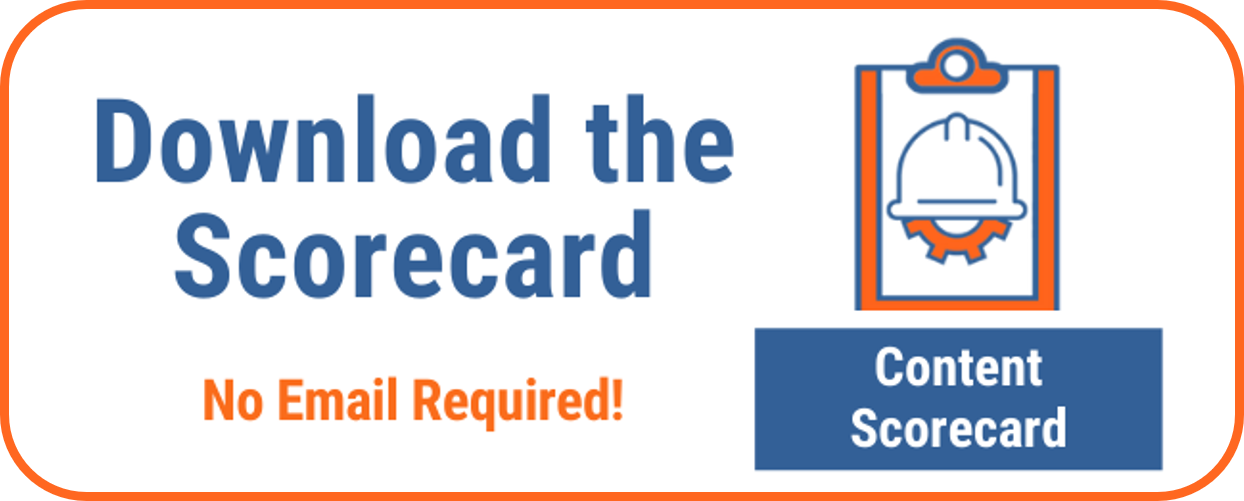Brand-name recognition has always been the Holy Grail for marketers. But when you’re trying to drive new buyers to your website, you need to rank for more than your own name and your own product names. Discover how to move beyond “branded search.”
In this post, we’ll share with you:
- The difference between branded and non-branded search.
- A simple process for determining what keywords your website ranks for to see how much of your traffic is branded traffic.
- The next steps to identifying the non-branded search terms that are critical for your success.
What is branded search?
Branded search occurs when someone is searching for your company name, or includes your brand name with services or products they’re searching for.
For example, let’s say I’m searching for the manufacturer “Parker Hannifan.” I input “Parker Hannifan” and the company is the first result in organic search results.
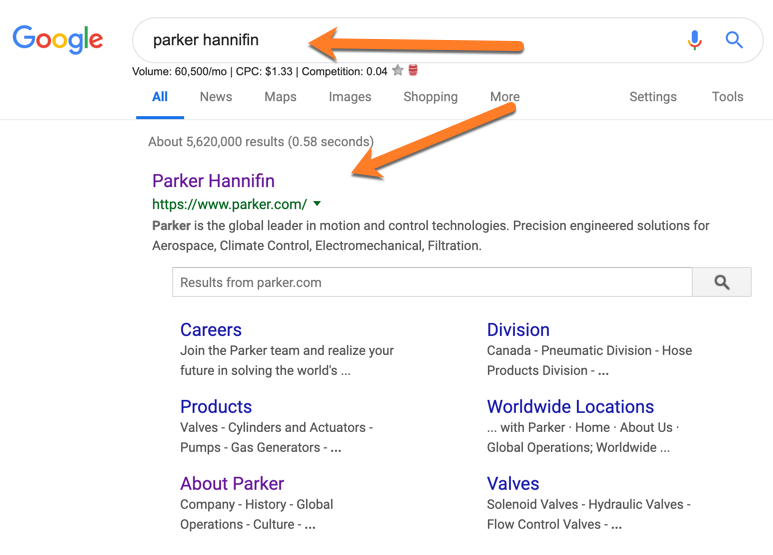
Branded search can also be specific to products and services. For example, I might search for “Craftsman Tools,” which is a brand of tools, lawn and garden equipment, and workwear currently owned by Stanley Black and Decker.
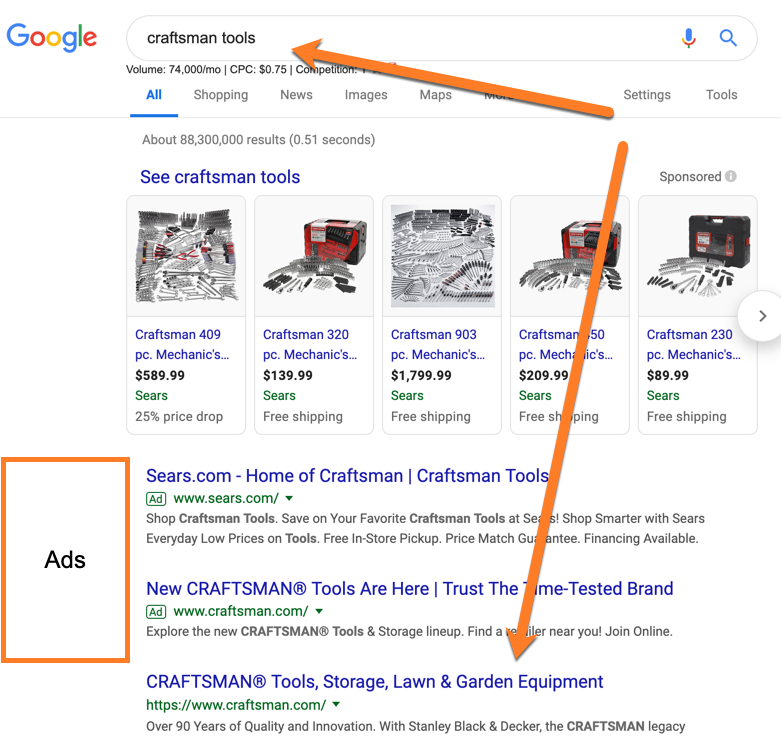
A non-branded search would be for just “tools.” We don’t see any results for Craftsman above the fold.
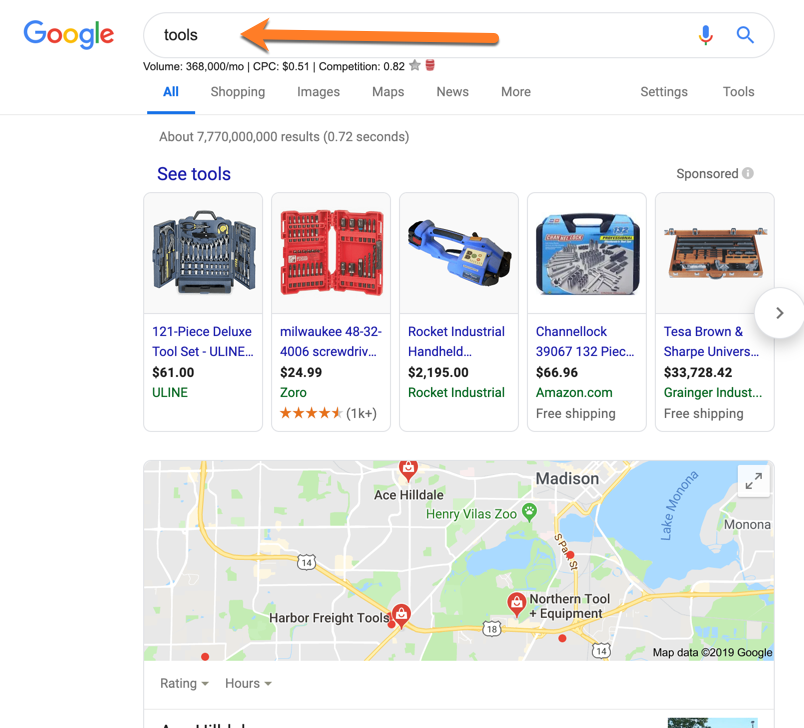
Scroll down and you run into the result, but it’s buried in an organic result for Sears.
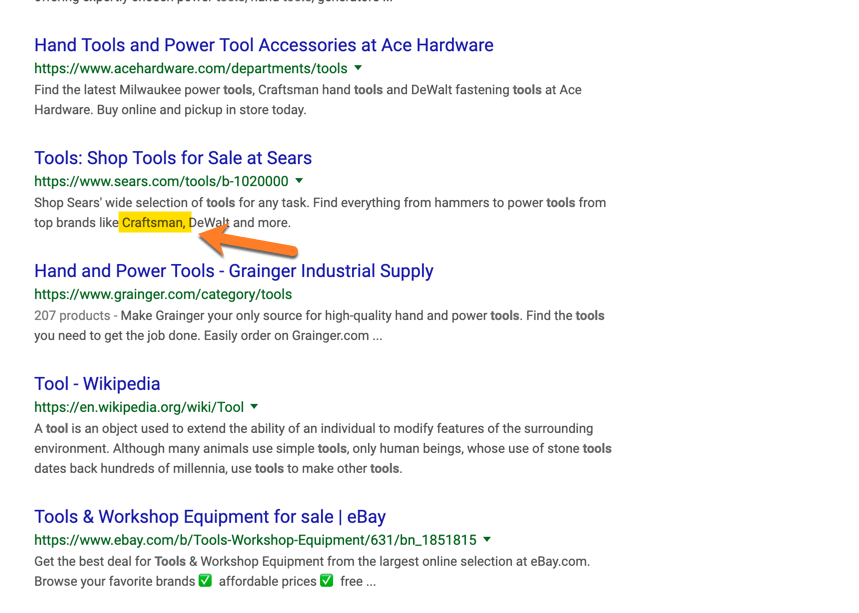
When you’re selling products or services, you want to rank for those non-branded terms, because you’re trying to reach people who have never heard of you. That’s how you generate new interest and new business.
Ok, so what keywords am I actually ranking for?
Step by step, we’re going to show you how to find out what keywords your website ranks for, and the percentage of traffic each of those keywords brings to your site.
This entire process should take no longer than 5 minutes!
This will require getting a trial membership with the keyword tool SEMrush, which we use in our own keyword research. (Full disclosure: We are a SEMrush affiliate, but you don’t have to get a paid version. The trial version will accomplish what you want.)
Step 1: Go to SEMrush and sign up for a membership
Click here to sign-up for a trial membership.
Step 2: Enter your website URL in the domain overview
Click on the Domain Overview listing on the left-hand column, then enter your domain in the overview window. I’ll use Parker Hannifan as an example, with a URL of Parker.com.
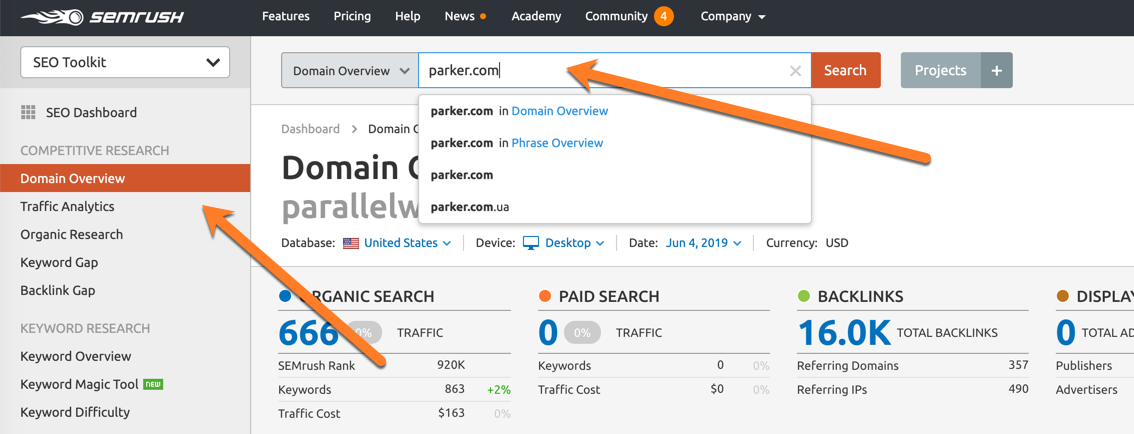
Step 3: Scroll down to the Top Organic keywords section
You’ll get a ton of great info here, but what we’re interested in is the keywords in the section highlighted in the graphic below. Scroll down to it.
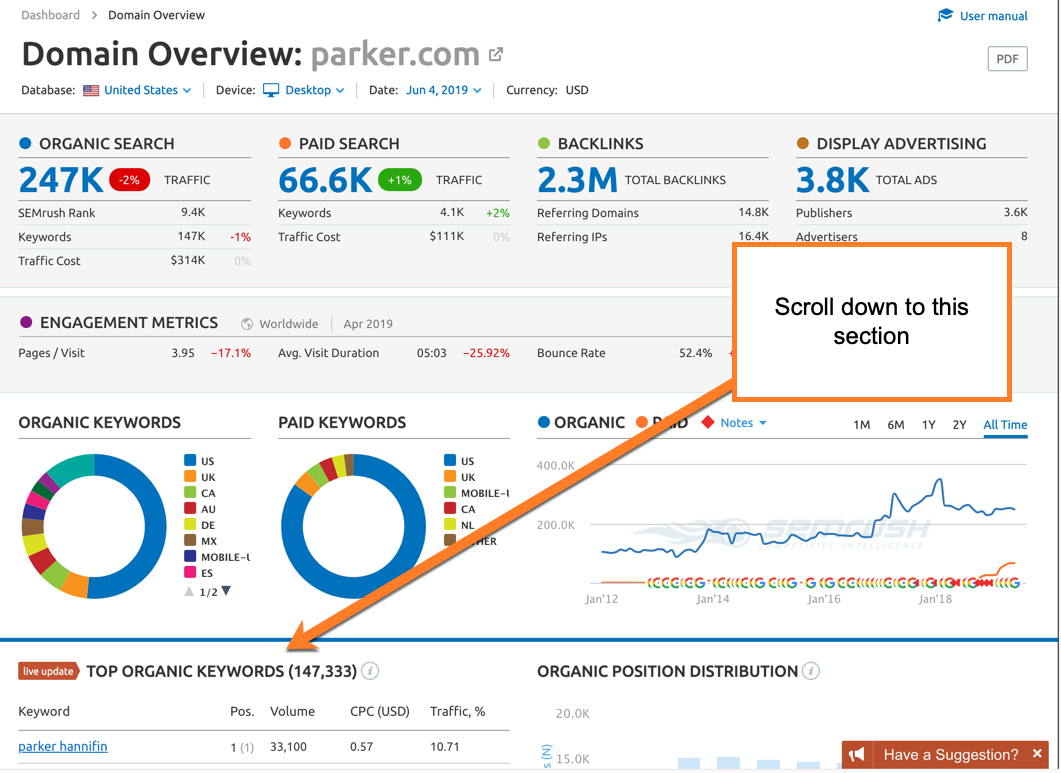
Now you can see the percentage of traffic for your top keywords. Parker has 10.71% of its traffic coming from the term “Parker Hannifin.” You’ll note there are other semantic keywords to the brand, such as “Parker” and “Parker Pol.”
You can click on the “View full report” button to get the complete report, which you can download as well.
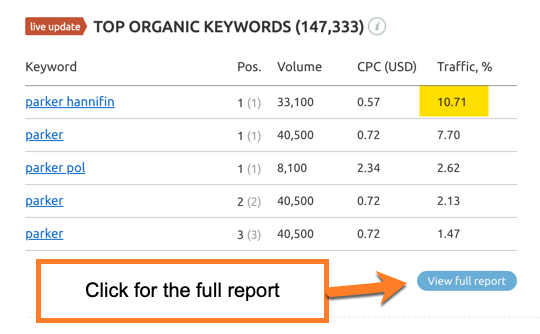
In the example above, we see that huge percentages of traffic are coming from variations of Parker Hannifin’s brand name. That’s awesome for them, because they are a huge company that’s been around for years.
Look at that search volume per month for each of those terms. Eye-popping.
Scrolling down on the report, we can see Parker also ranks for non-branded keywords. For example, they rank #1 for “hydraulic fittings,” which is a non-branded search term.
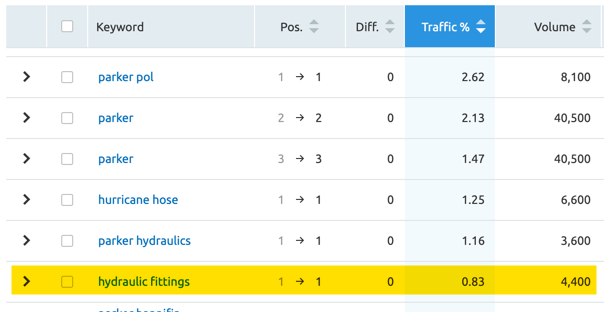
You can see they have a page optimized for that term. Nice job, Parker!
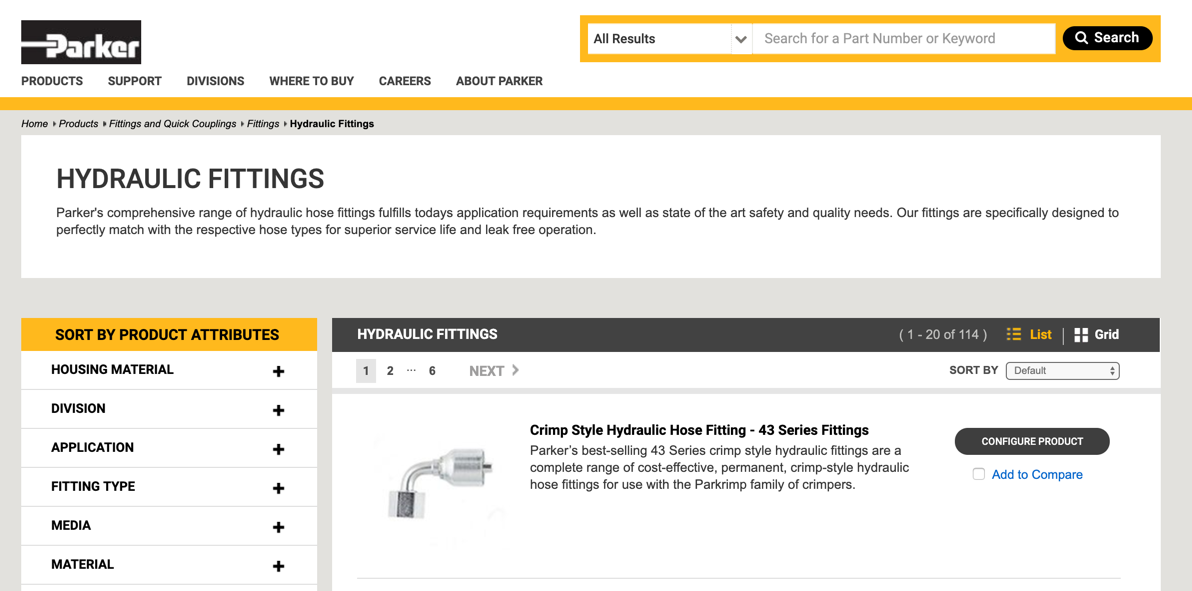
What percentage of keywords on my site should be “branded” and what should be “non-branded?”
This entirely depends on the size of your company and the popularity of the keywords that represent your products and services.
Despite their popularity, only around 25% of Parker’s search volume includes their brand name.
That’s likely because they rank for many non-branded terms, like “hydraulic fittings.”
We see a similar percentage with our clients as well. Take the manufacturer Delta ModTech, for example. You can see their company name pulls in around 25% of branded search traffic.
But we also have them strategically ranking for top of funnel, informational keywords, as well as product related terms. (These are blurred per request of the client.)
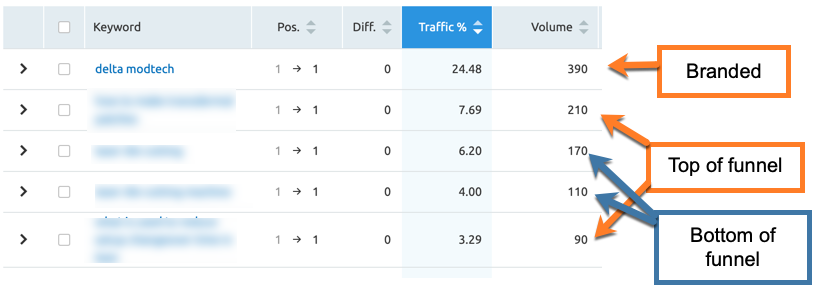
The top of funnel, middle of funnel, and bottom of funnel content relates to the particular point of the customer journey. You want to generate keyword optimized content for each stage so when someone is ready to research, compare or buy, they’ll find you.
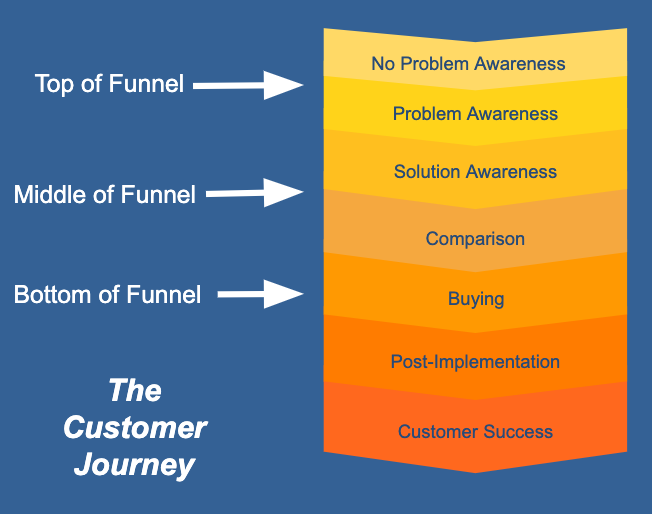
What you don’t want: Only “branded search”
The worst-case scenario is to rank only for your brand, and not for any other terms throughout the customer journey. We’ve blurred the companies here, but below is an example of search volume being out of whack.
This company has over 92% of their search from company-related terms. Unfortunately, they don’t have nearly the volume of Parker (720 searches per month).
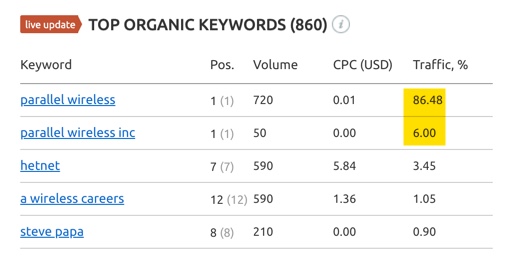
There is plenty of opportunity to create posts that rank and address customer problems, especially for manufacturers who tend to deal with specific problems. It’s an ideal way to get yourself in front of a customer.
The post you’re reading, for example, is an example of top of funnel content. Consider the post linked below for another one of our clients. It addresses an entry point into the customer journey.
Next steps: Map your keywords to the customer journey
The goal of this post was to introduce you to the concept of branded search terms, share the tool to help you determine your ranking, and then set you on the path to finding out how to rank for other keywords too.
Check out this post for information on how to map your keywords to the customer journey.
Find out how your content and conversion ranks with our interactive version of the Content Scorecard you can fill in yourself – no email required for download.

